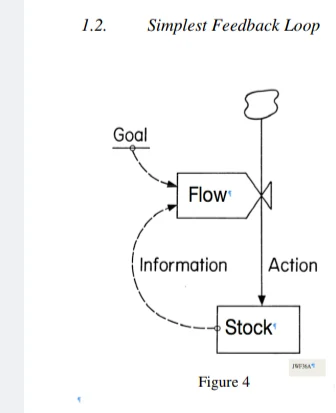First things first, I consider The Wire to be one of the great literary masterpieces, no less in ambition, scope and propulsion than War and Peace or Crime and Punishment.
To compare it with other TV shows is like comparing the Eiffel Tower with telecom signal towers.
When I first watched it a year later after it had ended (my brother gave me his 256 gig external HDD when he went off to college) the wire was one of the few things he didn't scrub.
I kept it. I watched it 3 years later just as I was going to college myself. It didn't appeal to me at all. Yeah everyone knows about inner cities and corners of Baltimore and Detroit but so do Seattle and LA. But I watched it over 3 months only when I felt like I needed something different. As I finished it, i realized it wasn't about Baltimore or as so many people like to point out "The Decline of America" or "This is Capitalism" in their marvelously stupid analyses. It's about system dynamics. Particularly social system dynamics.
NERD ALERT: 
Jay Wright Forrester was a pioneering American computer engineer and systems scientist. He is credited with being one of the inventors of magnetic core memory, the creator of the first computer animation, and the father of the field of System Dynamics. He was inducted into the computing hall of fame just weeks earlier for his contributions to the advancement of RAM. But what he is most famous for is his theorization of system dynamics, more appropriately nonlinear system dynamics where a system with many I/O processes huff and hum along with feedback loops, creating enormous amount of non-linearity in the final output.
Obviously, for !mathematics and !engineering who are well versed in control systems and differential equations this isn't an unheard of idea. {side note if you have an engineering degree and you don't know what transfer functions or PID controllers are, do everyone a favor and rope} But Forrester went further and looked straight at the problem. It is tough but nevertheless straightforward to find a generalized solution to a third order nonlinear diff eq. But how to formulate one from looking at just the output and input and the basis of assumptions for the multiple feedbacks that gives rise to the ODE than say just a polynomial function?
This is what set Forrester off.
[All the books by Forrester are available for free on his personal website maintained by either MIT or his family, not sure. https://systemdynamics.org/news/memorial/jay-w-forrester/ ]
Everyone knows that if the radius of a circle is changing at rate X, to find the rate of change of area a diff eq is to be used. But how can someone crack open Porter's five forces and surgically separate the structures (to their best effort) and apply cause/effect in their stocks and flows after which applying an ODE can be done by a freshman? The short answer is: Forrester. He wrote System Dynamics in the 70s because he was very much dissatisfied with the amount of practical guidance the EECS undergrads at MIT had about nonlinearity and their formulations. Most could find out the general solutions of ODEs within minutes, none could explain their reasoning on why they went for an ODE when given a black box with a nonlinear I/O instead of a polynomic equation.
As noted by Forrester in his paper:
Differential equations are difficult, confusing, weak, and unrealistic. They often mislead students as to the nature of systems. Mathematicians have had difficulty defining a derivative and there is a reason. Derivatives do not exist except in a mathematician's imagination. Nowhere in nature does nature take a derivative. Nature only integrates, that is, accumulates in stocks. Casting behavior in terms of differential equations leaves many students with an ambiguous or even reversed sense of the direction of causality. I have had MIT students argue that water flows out of the faucet because the level of water in the glass is rising; that seems natural to them if the flow has been defined as the derivative of the water level in the glass. Any child who can fill a water glass or take toys from a playmate knows what accumulation means. The stocks in a system dynamics model (the rectangle in Figure 4)
are the integrations (accumulations). By approaching dynamics through the window of accumulation, students can deal with high-order dynamic systems without ever discovering that their elders consider such to be very difficult.
So in this manner he approached Social Dynamics (which is a zillion orders more complex than any simple control system)
THE FIRST MAXIM
As the first foundation, system dynamics makes direct use of the vast store of information that people have acquired from living and working in their social systems. The overwhelming preponderance of such information resides in people's heads, not in the libraries, and not in measured numerical data. There are no written instructions adequate for raising a family, or building an automobile, or running a university. Such knowledge has been acquired through apprenticeship and experience. It exists in the mental data banks people use to guide their actions in response to what happens around them. The mental data base is also the primary source of information about the policies being followed at each decision-making point in a system. A typical discussion in a board meeting or at a cocktail party about what so-and-so will do if such-and-such happens is a discussion of that person's policies. It is an analysis of how the person will react to a new set of conditions. Such information about policies, while richly represented in the mental data base, appears in only limited form in the written data base, and almost not at all in the numerical data base.
The heart of SSD
As the second foundation, system dynamics rests on the concept of feedback loops as the fundamental building blocks governing change. A knowledge of feedback loops provides the necessary framework for selecting and organizing information. A feedback loop exists where present conditions determine actions that change surrounding conditions and thereby influence future actions. This circular process where conditions lead to actions that change conditions that lead to future actions are found at all levels of the natural world and human affairs.
The behavior of multiple, nested, interconnected feedback structures is often contrary to what our intuition would lead us to expect. Such structures can operate to defeat policy interventions; we see the results in so many failed governmental programs. Our attention is attracted to points in a system that have almost no leverage for producing change; the result can be extensive political debate about policies that matter very little one way or the other. Often, feedback-loops exhibit dynamic symptoms that lead people to exactly the opposite actions from those that would produce the desired results. Such counterproductive actions have characterized many urban programs intended to relieve the plight of the poor and underemployed. However, such programs have actually created social traps that draw the unskilled into situations where jobs are not available. Rather than alleviating hardship many government programs have unintentionally produced poverty and unemployment.
A policy giving opposite of the intended result was identified in Urban Dynamics by Forrester. Economic distress in declining American cities in the 1960s generated symptoms of high unemployment and deteriorating housing. It appeared natural enough to combat such symptoms by government intervention to build low-cost housing. But the modeling study showed, as events have since confirmed, that such urban areas already had more low-cost housing than the economy of the city could maintain. Public policy to build more such housing merely occupied land that could have been used for job-creating businesses, while at the same time the housing attracted people who needed jobs. The low-cost housing program was a powerful double force for increasing unemployment, both by reducing employment while at the same time attracting people seeking work. Low-cost housing in inner cities created a social trap. The policy of building low-cost housing was actually creating poor and unemployed people, rather than alleviating personal hardship. The lesson here is to avoid attacking symptoms of difficulty until the causes of those symptoms have been identified, and a high-leverage policy has been found that will cause the system itself to correct the problem.
The current press reports the pressures of the moment that surround decisions. The temporal nature of a decision sharply restricts the kind of literature in which operating policy will be revealed. Policies govern decisions and decisions control action. Decisions are fleeting. There is only a single instant in time when one can act. That time is now. Action must take place in the present moment that separates history from the future.
^^^THIS DIRECTLY NEGATES THE FIRST MAXIM
The ever-advancing present moment is the business person's and politician's world of action. It is the world of placing orders, hiring people, buying equipment, borrowing money, bargaining with unions, and extending credit. As a consequence of the short life of a decision, it is primarily in the literature of the present that decisions are discussed in terms of goals, threats, limited information, and restraints on action. The multifaceted conflicting pressures of real decision making are almost absent from economics text books and professional journals. The professional literature emphasizes how decisions should be made rather than how they actually are made, how equilibrium is determined rather than how dynamic behavior arises, and how macroeconomic theory might apply rather than how the microstructure creates the macrobehavior.
The usual writing and debate about a complex social system contains internal contradictions. Those contradictions usually occur in going from the structural assumptions to the implied dynamic consequences. In the step from assumptions to behavior, a writer tries to solve intuitively in his head the high-order nonlinear equations of the system; such is done correctly only rarely. But a model simulation provides certainty in going from the assumptions about structure and policies to the implied behavior.
Tl;dr - If you have ever seen a romanesco broccoli and wondered why the frick does it have a golden ratio spiral on it, the wire is the show for you. It's the greatest puzzle piece of nonlinear ODEs (more like OD's am I right drugtards) in a social system ever shown. Slice by slice. Model by model. Season by season
End.
Post-script:
!kino does anyone seriously think Stringer was smarter than Avon? Some people only come to realize how stupid bell was when he tried to get Mr.Sheeeeeeeeeiiiit whacked. Others excuse even that saying "he just lost his cool for a second"
Motherlover thought 2 years of economics courses (and acting like a stoic b-word) would make him manage a drug network better. Imagine Jobs going to design school at 50 thinking it will make him understand Apple's competitive edge better. 
Avon outsmarted everyone, did not cross on anyone's turf (not because he was meek but because he was constantly weighing his enemies and allies), showed genuine sympathy for his family and understood plain and simple that A. illicit drugs have a demand that will never go away and B. You cannot operate with a network whose authority is higher than law enforcement (like Bell tried to do by lobbying Clay Davis; because if the story breaks it becomes national and you have become too big of a target to survive) or whose power is lower than their rival gang (then you're just waiting to be muscled out).







Jump in the discussion.
No email address required.
what about the porn
Jump in the discussion.
No email address required.
He removed it. And frankly, I don't want to ever know what kind of porn my brother watches.
Jump in the discussion.
No email address required.
Coward
Jump in the discussion.
No email address required.
More options
Context
More options
Context
More options
Context